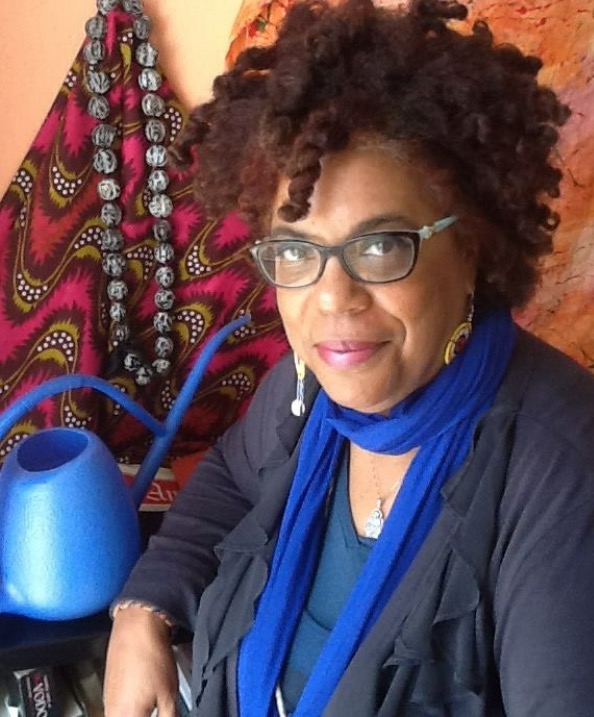By Radiah Harper
***
You know when someone or something has crossed the threshold of your sanity in the workplace. At that moment, you have to make decisions, even when in a senior position. Has there been an irrevocable offense? Is it racism or oppression and intolerable? We ask ourselves, can I afford to quit? You decide on what is personally important to you and go from there. It happened to me. After years of offenses, and progress too, I heard anti-black statements made by another senior staff member on the management team and no person in the room objected besides me. I walked out of the meeting and in that moment, clang, the door shut between me and my colleagues, and I quit. In my mind, that is. It took me another 8 months for my feelers, networks, and revised resume to produce the action I wanted: a really great job offer. I was ready and willing to use what I had I learned to date elsewhere.
One thing I know for sure is no workplace is perfect. When we commit to bringing equity and justice to the office and public we may meet undereducated colleagues who resist our points of view. There is always a hope that seemingly like-minded people work where you work and everybody is rowing in the same direction. When that’s not the modus operandi of your organization and white privilege is speaking louder than your sanity, you come up with deliberate and thoughtful actions to make your case on how racist thinking debilitates colleagues and visitors. When I look back at the 30-year journey that took me on the winding road to teaching artist, community programs coordinator, educator, executive director, curator, and museum management consultant, I see where the need to question institutional motive and raise consciousness in colleagues was everywhere. My self-described role became addressing with scholarship institutional decisions about exhibition topics, object selection, or label copy, for example, that would further oppress people of color.
My approach was to:
1. Look colleagues in the eye and tell them we’re not having it.
2. Teach or inform by offering another artistic, cultural, or historical narrative.
3. Visualize an inclusive scenario and share it.
4. Be relentless with my objections to what is wrong, prejudiced, biased, or limiting.
5. This is a hard one–realize that I’m not going to win any popularity contest by objecting, and seek institutional transformation anyway.
Despite the obstacles, there have been many exciting moments in my various positions where I was lucky enough to see people benefiting from my work. I’ve made friends among my colleagues; trained staff and seen them grapple with and embrace a more truthful way to talk about aspects of African American history in North America; seen public programs change and grow to include a progressive black history and audiences embraced the changes; experienced institutions evolve their philosophy and hiring practice to include black and brown professionals in senior and junior positions and regard their voices as necessary; and heard colleagues express a new awareness of how being in a diverse workplace is the best place to be and now a preferred choice.
So why am I sharing this now? Over the last five or so years there has been an explosion of talented black and brown professionals entering the field. It seems en masse you are asking your institutions tough questions that push for racial equity and access for staff and audiences who reflect our national demographics. So many more people are doing the work now of decentering whiteness to make room for our communities, that I wanted to offer some of my expertise as examples of experiences which often time led to success. When recalling them I am surprised to see the long museum career behind me. How did I survive without an army like you? I knew I belonged in each of my institutions and I was planting seeds for the future. As one person or among many colleagues, we all face challenges in the work place and if there are things I have learned that can help you flourish, please take notes, or call on me.
Effecting institutional change is a long- term process. Keeping my personal/professional mission for life, museums, and communities top of mind, helped ground my journey. When the barometer would fall and I needed energy for another day, I could summon up my certainty in the importance of black and brown people, and our intricate role in every facet of this national life, and I could get back to work. A career is a long haul, and because we are in the museum spaces we can think of our agency as limitless and use it to make a difference.
***

Photo Courtesy of Radiah Harper. [Image shows Radiah smiling, dressed in blue and wearing glasses. She is leaning against a bookshelf with a blue watering can. There are beads as well as red, green, black and orange textiles in the background.]

[…] week we read a piece published on Incluseum called “LETTER TO YOUNG MUSEUM PROFESSIONALS OF COLOR OR WHAT TRANSPIRES ON A LONG-HAUL CAREER WHEN CONFRONT…” by longtime museum consultant, Radiah Harper. If you haven’t read it, you should. […]
Excellent piece!
[…] Letter to Young Museum Professionals of Color or What Transpires on a Long-Haul Career When Confronted with Racism in the Museum by Radiah Harper (click here) […]